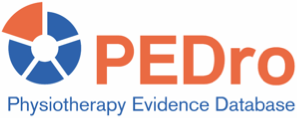This Cochrane systematic review evaluated the effectiveness and safety of non-invasive positive pressure ventilation compared to standard care for adults with acute cardiogenic pulmonary oedema. Randomised controlled trials recruiting participants aged 18 years and older with a diagnosis of acute cardiogenic pulmonary oedema that evaluated nasal or face mask non-invasive positive pressure ventilation (continuous positive airway pressure, bilevel non-invasive positive pressure ventilation, or both) were included. Cross-over and cluster trials were excluded. The primary outcome was hospital mortality. Secondary outcomes included endotracheal intubation, incidence of acute myocardial infarction during hospitalisation, after starting treatment. The quality of the evidence was assessed using the GRADE approach.
24 trials (n = 2,664 participants) were included. Most trials were conducted in emergency departments or intensive care units. The mean age of the population was 73 (SD 9) years. There was low-quality evidence that non-invasive positive pressure ventilation may reduce hospital mortality compared to standard care (relative risk 0.65, 95% confidence interval (CI) 0.51 to 0.82; n = 2,484 participants; number needed to treat = 17). There was moderate quality evidence that non-invasive positive pressure ventilation probably reduces endotracheal intubation rates (RR 0.49 95% CI 0.38 to 0.62; n = 2,449 participants; number needed to treat = 13). There was moderate quality evidence that non-invasive positive pressure ventilation probably does not reduce the incidence of acute myocardial infarction compared to standard care (RR 1.03 95% CI 0.91 to 1.16; n = 1,313 participants; number needed to treat = 5). The use of non-invasive positive pressure ventilation in patients with acute cardiogenic pulmonary oedema may reduce mortality and probably reduces the risk of endotracheal intubation.
Berbenetz N et al. Non-invasive positive pressure ventilation (CPAP or bilevel NPPV) for cardiogenic pulmonary oedema. Cochrane Database Syst Rev 2019;Issue 4
Read more on PEDro.



